Introduction
If you’re dreaming of growing your own fresh fruit but worry about water scarcity or scorching summer heat, figs might just be your garden’s best-kept secret. Among the most rewarding and resilient fruit trees, figs are not only delicious and packed with nutrients but also impressively drought-tolerant. These tough trees thrive in conditions where many others fail, making them a natural fit for anyone embracing climate-resilient gardening.
Figs are ancient fruits with a rich history of cultivation in dry, Mediterranean-like climates. Today, they remain one of the most climate-adaptable crops—ideal for home gardeners looking to conserve water without sacrificing harvests. Thanks to their deep root systems, figs can access moisture buried deep in the soil, allowing them to flourish in drought-prone regions with minimal irrigation.
Even if you’re new to gardening or live in a compact urban space, there are fig varieties perfectly suited to small yards, patios, and containers. Best of all, many types are self-pollinating, low-maintenance, and highly productive once established.
In this guide, we’ll introduce you to the top 5 best fig types you can grow at home—especially in hot, dry climates. Whether you’re planning a low-water edible landscape or simply looking to add a hardy fruit tree to your backyard, these drought-tolerant fruits are a delicious and sustainable choice.
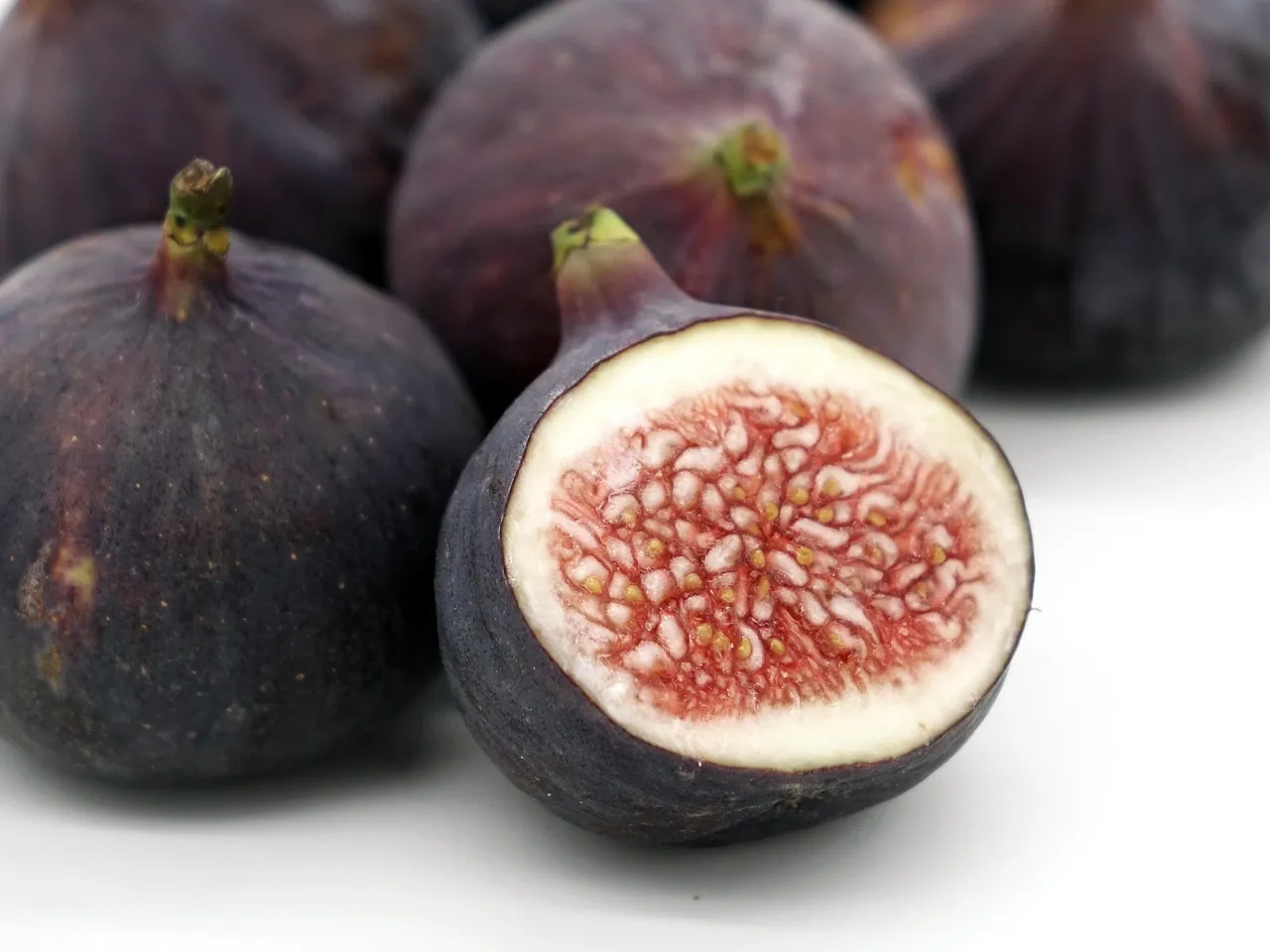
1. Black Mission Fig
- Ideal For: Hot climates, backyard gardens, patios, and large containers
- Hardiness Zone: 7–10
Why It Stands Out:
The Black Mission Fig is often regarded as one of the best fig types for both home gardeners and commercial orchards—and for good reason. With its deep purple-black skin and rich, strawberry-hued flesh, this variety delivers a luscious, jammy flavor that’s perfect for fresh snacking, baking, or making preserves.
But the appeal of the Black Mission Fig goes far beyond its taste. This fig tree is incredibly heat-tolerant and performs exceptionally well in low-water environments, making it an ideal choice for gardeners living in hot, dry regions. Once established, it requires minimal irrigation—qualifying it as one of the top drought-tolerant fruits available for home cultivation.
As a self-pollinating variety, the Black Mission Fig does not need a second tree to produce fruit. This makes it an excellent, low-maintenance option for beginner gardeners or those with limited space. It adapts well to container growing and responds positively to pruning, allowing for easy size control and shaping.
Climate-Resilient Gardening Benefits:
- Deep-rooted and naturally adapted to drought-prone conditions
- Tolerates full sun exposure and high summer temperatures
- Performs reliably even with minimal care—perfect for climate-resilient gardening systems
Quick Growing Tips:
- Plant in full sun and well-drained soil to maximize fruit production.
- Mulch around the base to conserve moisture and suppress weeds.
- Water deeply during the first year, then reduce frequency to encourage drought tolerance.
Whether you’re cultivating a Mediterranean-style orchard or simply want a hardy fruit tree for your backyard, the Black Mission Fig offers unbeatable resilience, flavor, and beauty.
2. Kadota Fig
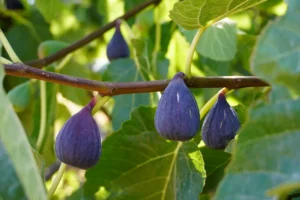
- Ideal For: Mediterranean-style gardens, low-rainfall zones, container growing
- Hardiness Zone: 8–10
Why It Stands Out:
The Kadota Fig is a classic variety with a long legacy in arid and Mediterranean climates. Recognizable by its smooth, greenish-yellow skin and sweet, golden flesh, this fig is a favorite for fresh eating, canning, and drying. It’s especially prized for its mild, honey-like flavor and lack of seeds, making it kid-friendly and versatile in the kitchen.
Kadota figs are naturally suited to hot, sunny regions with limited rainfall. Once established, the tree demonstrates impressive drought resilience, placing it among the top drought-tolerant fruits for home gardeners. Its adaptability to low-water conditions and heat stress makes it a core asset for anyone practicing climate-resilient gardening.
Although it prefers slightly warmer zones, the Kadota Fig thrives with minimal inputs. It’s also suitable for growing in large containers, especially in urban gardens or patios where water conservation is important.
Climate-Resilient Gardening Benefits:
- Thrives in dry, sunny conditions with minimal irrigation
- Naturally pest-resistant and low-maintenance
- Excellent yield even in water-scarce environments
Quick Growing Tips:
- Ensure full sun exposure to develop its signature sweetness.
- Protect from heavy winter frosts with mulch or fleece.
- Ideal for use in xeriscaping or drought-tolerant garden designs.
If you’re seeking a robust, beautiful fig tree that can handle dry conditions while producing delicious fruit, the Kadota is a standout among the best fig types for hot climates.
3. Brown Turkey Fig
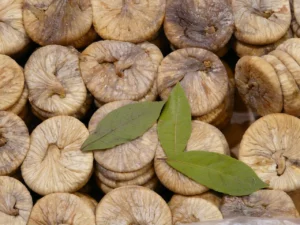
- Ideal For: Beginners, small gardens, drought-prone areas
- Hardiness Zone: 7–10
Why It Stands Out:
The Brown Turkey Fig is often called the beginner’s fig—and with good reason. It’s one of the most adaptable and forgiving fig varieties you can grow. With its copper-brown skin and soft, pinkish interior, this fig offers a mild, earthy sweetness that works well fresh or dried.
Brown Turkey figs are known for producing two crops per year in warmer zones—one in early summer and another in late summer or early fall—offering an extended harvest window. More importantly, this variety is exceptionally drought-tolerant, making it ideal for those living in hot, dry regions or those shifting toward climate-resilient gardening methods.
It’s well-suited to container growing and small garden plots, and its tolerance to pruning makes it easy to manage in tight spaces.
Climate-Resilient Gardening Benefits:
- Tolerates intense sun and water restrictions
- Ideal for edible landscapes that conserve resources
- Highly productive even with modest care
Quick Growing Tips:
- Prune annually to shape and boost fruiting.
- Use a thick layer of mulch to retain moisture in hot months.
- Grow in raised beds or pots if your native soil lacks drainage.
If you’re new to fig growing or live in an area with unpredictable rainfall, the Brown Turkey Fig is a low-risk, high-reward variety.
4. Desert King Fig
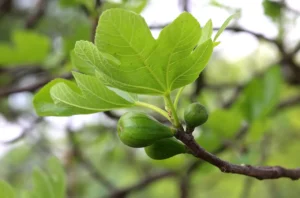
- Ideal For: Semi-arid climates, Pacific Northwest, cool summer nights
- Hardiness Zone: 7–9
Why It Stands Out:
The Desert King Fig is a powerhouse variety, especially in regions with hot days and cool nights. It features striking green skin and vibrant red flesh, with a rich, berry-like flavor. Unlike many other figs, Desert King produces a large and early breba crop (first crop), making it a great option for areas with shorter growing seasons.
This variety is well-adapted to semi-arid and Mediterranean climates, tolerating both heat and drought once it’s established. As a result, it has gained popularity among gardeners focused on climate-resilient gardening and drought-tolerant fruit production.
Its ability to thrive with minimal irrigation and its dependable early fruiting make it an excellent addition to any sustainable edible garden.
Climate-Resilient Gardening Benefits:
- Produces fruit early, reducing risk of crop loss due to weather
- Tolerates wide temperature ranges, from hot days to cool nights
- Performs well with minimal watering—great for low-water landscapes
Quick Growing Tips:
- Water regularly during its first year, then reduce frequency.
- Protect early fruit from late frosts in cooler zones.
- Train on a fan or espalier for space-saving growth in small gardens.
The Desert King proves that figs can succeed even in marginal climates—perfect for gardeners who want to beat the heat and still harvest early, flavorful fruit.
5. Celeste Fig
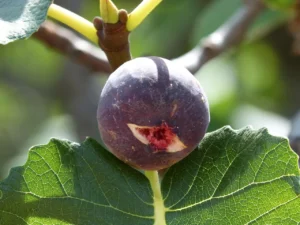
- Ideal For: Southern gardens, dry soils, container and raised-bed gardening
- Hardiness Zone: 6–9
Why It Stands Out:
Last but not least, the Celeste Fig—often called the “Sugar Fig”—is a compact, cold-tolerant tree that excels in dry, Southern climates. With its small, pear-shaped fruit and intensely sweet flavor, Celeste is a favorite among fig enthusiasts and Southern gardeners alike.
This variety is one of the most drought-hardy fig trees you can grow. It adapts well to poor or dry soils, including sandy and clay substrates, and requires very little maintenance. Once established, the Celeste is remarkably self-reliant, making it a cornerstone of climate-resilient gardening strategies.
It’s also naturally pest-resistant and disease-tolerant, reducing the need for chemical inputs and enhancing your garden’s overall sustainability.
Climate-Resilient Gardening Benefits:
- Excellent drought tolerance and minimal care requirements
- Naturally compact—ideal for small yards or container growing
- Thrives in Southern heat and poor soils
Quick Growing Tips:
- Protect young trees from extreme cold during their first winter.
- Avoid overwatering; this fig prefers drier conditions.
- Perfect for permaculture or low-maintenance edible gardens.
If you’re looking for a sweet, resilient fig tree that fits beautifully into a sustainable, drought-conscious landscape, the Celeste Fig is a top-tier choice.
Tips for Growing Figs in Hot or Dry Climates
- Mulch generously to retain soil moisture.
- Water deeply but infrequently to promote drought resilience.
- Choose containers with good drainage for urban gardens.
- Ensure 6–8 hours of full sun for maximum fruit production.
- Avoid high-nitrogen fertilizers; figs thrive in leaner soils.
Why Figs Are a Smart Choice for Climate-Resilient Gardening
As climate patterns continue to shift and water scarcity becomes a growing concern, more home gardeners are seeking sustainable ways to grow food. This is where figs truly shine. Known for their incredible adaptability and resilience, fig trees are a top-tier choice for anyone embracing climate-resilient gardening practices.
Figs are one of the most dependable drought-tolerant fruits you can grow at home. With their deep root systems and ability to thrive in nutrient-poor or dry soils, these trees require far less water than most fruit-bearing plants. Once established, they can survive long periods of drought with minimal supplemental irrigation—perfect for gardeners in hot, arid, or Mediterranean climates.
Here’s why figs are an ideal choice for sustainable, climate-adaptive gardens:
Low-Water and Heat-Tolerant
Figs are naturally suited to hot, sun-drenched environments. Many of the best fig types have evolved in regions with dry summers and limited rainfall, making them ideal for areas affected by heatwaves and drought. Their tough leaves and efficient water use allow them to thrive where many other fruit trees struggle.
Pest- and Disease-Resistant
Compared to other fruits, figs face fewer issues with pests and diseases. This means you can grow them organically with little to no need for pesticides or chemical sprays—an important advantage for both environmental health and climate-resilient gardening efforts.
Productive in Climate-Stressed Zones
Even in regions experiencing unpredictable weather, figs continue to perform well. Whether you’re facing scorching temperatures, dry spells, or erratic rainfall, these trees often remain productive and consistent. Their adaptability makes them reliable contributors to low-maintenance edible landscapes.
Sustainability and Satisfaction in Every Harvest
Incorporating fig trees into your home garden is more than just a smart horticultural decision—it’s an investment in long-term sustainability. Figs offer high yields of nutrient-rich, delicious fruit without excessive input. They support water-wise gardening, reduce your reliance on store-bought produce, and contribute to local food security—all while enhancing your landscape with their bold foliage and architectural form.
With figs, you’re not just planting a fruit tree. You’re cultivating a resilient, eco-conscious lifestyle—one that thrives even in the face of climate change.
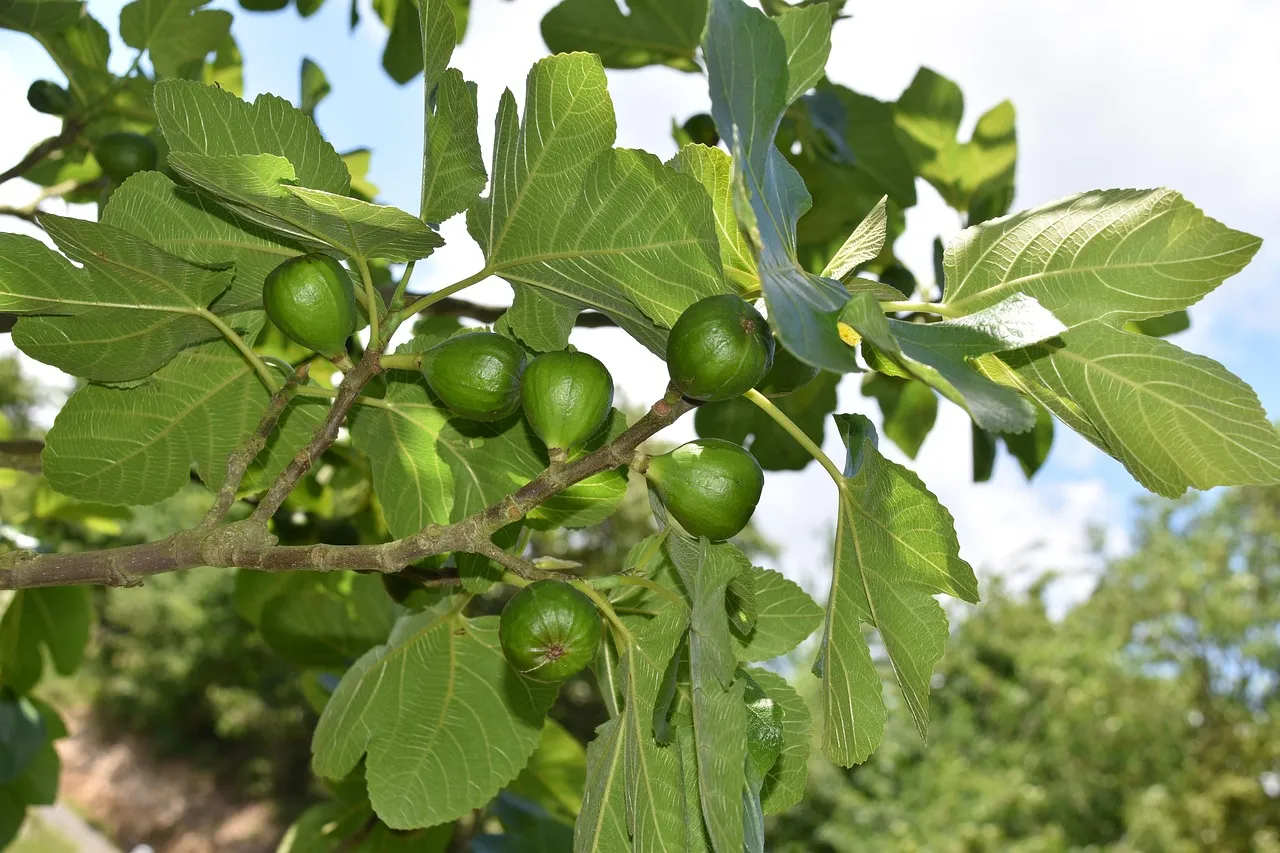
Final Thoughts
If you’re dreaming of a thriving edible garden in a hot or dry region, figs deserve a spot at the top of your list. These best fig types not only withstand tough climates but also add beauty, flavor, and resilience to your garden.
🌿 Embrace the future of gardening with figs—nature’s answer to climate-smart fruiting.
